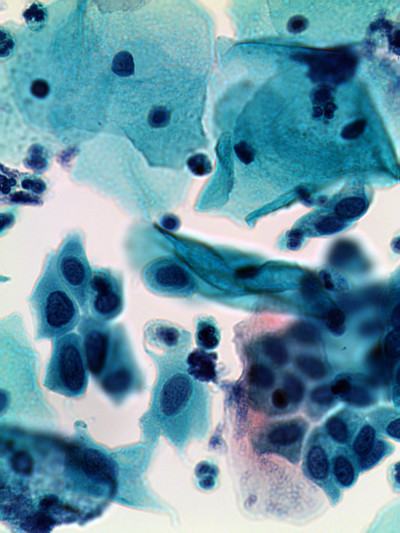Laboratory Services
Fragile X Syndrome, Molecular Analysis, Varies
Print this pageUpdated Test Information:
| Test Description |
Fragile X Syndrome, Molecular Analysis, Varies
|
|
|---|---|---|
| Synonym(s) |
FMR1, Fragile X tremor ataxia syndrome, FXTAS, Martin-Bell Syndrome, FXPB, POF, Premature ovarian failure, POI, Premature ovarian insufficiency |
|
| Test ID |
FXS
|
|
| Performing Lab |
Labcorp |
|
| General Information |
Confirmation of a diagnosis of fragile X syndrome, fragile X tremor/ataxia syndrome, or premature ovarian insufficiency caused by expansions in the FMR1 gene Determination of carrier status for individuals with a family history of fragile X syndrome or X-linked intellectual disability Prenatal diagnosis of fragile X syndrome when there is a documented FMR1 expansion in the family |
|
| Container Type |
Yellow-top (ACD-A) or lavender-top (EDTA) or pink-top (EDTA) or tan-top (EDTA) tubes or PurFlock buccal swab kit or Oragene Dx 500 saliva collection kit |
|
| Specimen Type |
Whole blood or PurFlock buccal swab kit or Oragene Dx saliva kit |
|
| Specimen Requirements |
Submit only 1 of the following specimens: Specimen Type: Whole blood Specimen Type: Amniotic fluid Specimen Type: Chorionic villi Specimen Type: Confluent cultured cells |
|
| Specimen Collection / Processing Instructions |
Whole blood: Confluent cultured cells: |
|
| Minimum Sample Volume |
Blood: 0.5 mL |
|
| Stability |
Maintain specimen at room temperature or refrigerate at 4C Do not freeze. Whole blood: 14 days at room temperature or 30 day |
|
| Unacceptable Specimen Conditions |
All specimens will be evaluated at Labcorp for test suitability. |
|
| Methodology |
Polymerase Chain Reaction (PCR)-Based Assay |
|
| Estimated TAT |
8-10 days |
|
| Testing Schedule |
Monday and Wednesday |
|
| CPT Code(s) |
81243 |
|
| Reference Range |
Normal alleles: 5-44 CGG repeats Methylation status: |
|
| Reflex Conditions |
Please see: Mayo Clinic Test Directory |
|
| Additional Information |
When this test is ordered, fragile X follow-up analysis testing will be performed and charged dependent upon the reported gender of the individual and on the size of the CGG repeat found by polymerase chain reaction (PCR) analysis. When sending in prenatal specimens: If amniotic fluid (nonconfluent cultured cells) is received, amniotic fluid culture will be added and charged separately. If chorionic villus specimen (nonconfluent cultured cells) is received, fibroblast culture for genetic test will be added and charged separately. For any prenatal specimen that is received, maternal cell contamination studies will be added. Fragile X syndrome is an X-linked disorder with variable expression in males and females. In greater than 99% of affected individuals, it is caused by an expansion of the CGG trinucleotide repeat in the 5'UTR (untranslated region) of the FMR1 gene, located on the X chromosome. This trinucleotide repeat is polymorphic in the general population, with the number of repeats ranging from 5 to 44. These normal alleles are passed from generation to generation with the number of repeats remaining constant. Small expansions, called premutations, range from 55 to 200 CGG repeats. Individuals with a premutation do not exhibit features of fragile X syndrome but are at risk for other FMR1-related disorders such as fragile X tremor/ataxia syndrome (FXTAS) and premature ovarian insufficiency (POI). Transmission of a premutation by a man to his daughter usually results in little or no change in the CGG repeat number. Transmission of a premutation by a woman to her son or daughter usually results in further expansion, either to a larger premutation or a full mutation. The risk for a woman with a premutation to have a child affected with fragile X syndrome by expansion to a full mutation increases with the number of CGG repeats in the premutation. Full mutations are typically greater than 200 repeats long and are associated with abnormal methylation of a region adjacent to the FMR1 gene. This is thought to interfere with normal FMR1 gene expression, resulting in fragile X syndrome. There are multiple clinical phenotypes associated with expansion (premutations and full mutations) in the FMR1 gene. Fragile X Syndrome: Approximately 1 in 4000 individuals are affected with fragile X syndrome. Most affected male patients exhibit moderate mental retardation with affected female patients having milder, if any, cognitive deficiency. Neuropsychiatric diagnoses, such as autism spectrum and anxiety disorders, are common. Characteristic physical features include a long face with prominent jaw, protruding ears, connective tissue abnormalities, and large testicles in postpubertal male patients.
Fragile X Tremor/Ataxia Syndrome: FXTAS is a neurodegenerative disorder that is clinically distinct from fragile X syndrome. Both male patients and female patients with a premutation are at risk for FXTAS. However, the disorder is much less common and milder in clinical presentation than fragile X syndrome and shows a later age of onset in female patients. Clinical hallmarks of the disorder include intention tremor, gait ataxia, dementia, and neuropsychiatric symptoms. The risk for FXTAS increases as the number of CGG repeats increases, and the majority of individuals with FXTAS have CGG repeat expansions of 70 or more. Penetrance of clinical symptoms is associated with increasing age, with the majority of affected men showing symptoms between age 70 and 90. Premature Ovarian Insufficiency: Female patients with a premutation are at risk for increased follicular stimulating hormone (FSH) levels, early menopause, and POI. Penetrance and early onset of female reproductive symptoms correlates with increasing size of the CGG repeat and reaches its highest penetrance at approximately 80 to 90 repeats. Of note, penetrance remains stable or may even decrease at approximately 100 repeats. There is no risk for increased penetrance of the POI phenotype due to maternal or paternal inheritance of the expanded CGG repeat. |
